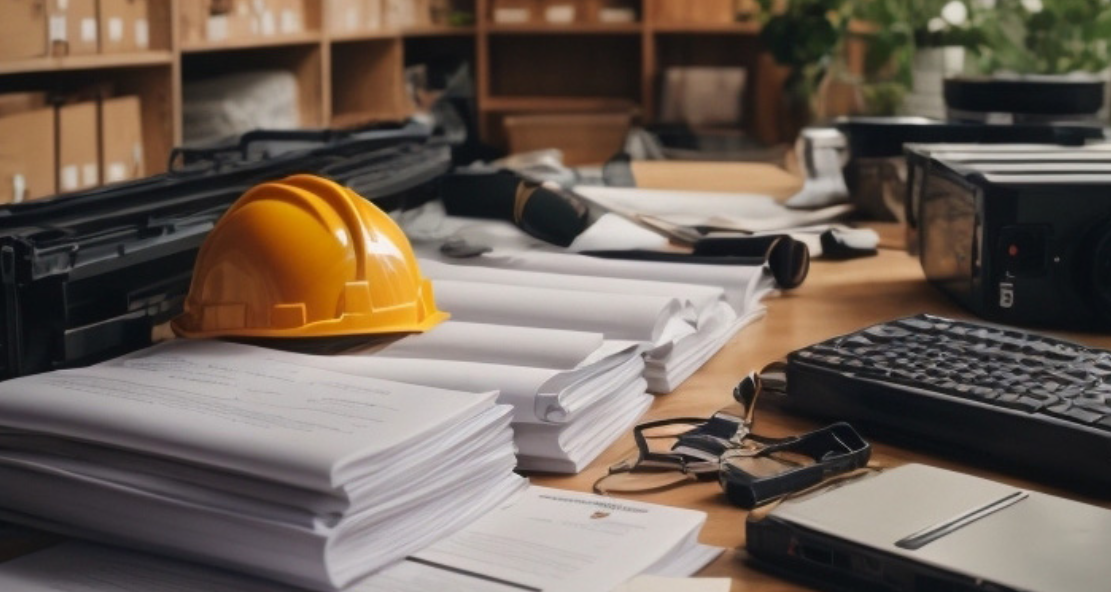Effective Ways to Protect the Floor During Construction
6 Min read
)
May 29, 2024
Protecting floors during construction is crucial to maintaining the integrity and appearance of flooring materials. Whether you are involved in a renovation or new build, ensuring that floors are safeguarded against damage from construction activities can save time, money, and effort. It is essential to prevent damage, maintain safety, and ensure a clean and professional finish for the final product. Construction activities can be tough on floors, whether they are hardwood, tile, carpet, or concrete. But before doing so, you must first know what type of flooring you are protecting, may it be carpet, granite, laminate, marble, stone, tile, vinyl, or wood. And you must also know what you are protecting against, is it dents, cracks, spills, scratches, scorches, or wrinkling.
Options for Floor Protection
1. Protective Films
Protective films are adhesive sheets applied directly to the floor surface, providing a temporary barrier against dirt, spills, and light foot traffic. They are particularly useful for protecting carpets and hardwood floors. While easy to apply and remove, they may not offer sufficient protection for heavy-duty activities and can leave adhesive residue if left on too long.
2. Cardboard and Paper Boards
Heavy-duty cardboard or reinforced paper boards cover large areas quickly and effectively prevent scratches, dents, and impact damage. These materials are cost-effective and suitable for general protection. However, they can absorb liquids if not waterproofed and need to be secured to prevent movement during use.
3. Plywood Sheets
Plywood sheets offer robust protection for areas with heavy machinery and high foot traffic. They are extremely durable and can withstand significant impacts and weight, making them reusable for multiple projects. Despite their effectiveness, plywood sheets are heavy, cumbersome to install, and can be expensive.
4. Floor Protection Mats
Specialized floor protection mats, often made from rubber or foam, provide a cushioned barrier over floors, protecting against heavy foot traffic and dropped tools. These mats are easy to install and reposition, offering durability and slip resistance. However, they can be more expensive than other options and may not cover very large areas easily.
5. Masonite Boards
Masonite boards are hard, compressed fiberboards ideal for high-traffic areas, providing excellent protection against heavy impacts and abrasions. They are durable, strong, and reusable. The downside is that they can be difficult to cut and install and are heavier than cardboard or paper options.
After assessing the things you will use and after installing them. Here's the next thing you have to do:
Employ Door and Threshold Protection
Protecting entryways and thresholds is crucial to prevent damage from constant foot traffic and the movement of heavy equipment. These areas are particularly vulnerable as they experience high usage and the most wear and tear during construction. Installing door jamb protectors and threshold shields can effectively safeguard these vulnerable spots. These protectors are typically made from durable materials such as foam or plastic, which provide a cushioning buffer against impacts and abrasions. By using these protective measures, you can significantly reduce the risk of dents, scratches, and other damage that can occur in high-traffic entry points.
Regular Cleaning and Maintenance
Regular cleaning and maintenance of protective coverings are essential to ensure their continued effectiveness. Over time, dust, debris, and spills can accumulate on protective materials, potentially seeping through and damaging the underlying floor if not promptly addressed. Regularly cleaning the surface of these coverings helps maintain their protective properties and ensures that they remain intact and functional. Additionally, routine inspections and adjustments of the protective materials are necessary to keep them properly positioned and effective. Consistent maintenance practices help extend the life of the floor protection and ensure that it performs optimally throughout the construction process.
Use Corner and Edge Guards
Corners and edges of floors are particularly susceptible to damage during construction activities. These areas are prone to impacts from tools, equipment, and materials being moved around, which can lead to chipping, cracking, and other forms of damage. Using corner and edge guards can provide additional protection in these high-risk areas. These guards, made from materials such as foam, plastic, or metal, are designed to absorb impacts and shield the floor edges from direct contact with potentially damaging objects. By installing corner and edge guards, you can significantly reduce the likelihood of damage and maintain the integrity and appearance of the floor throughout the construction process.
Tips for Choosing Floor Protection Materials
Selecting the right floor protection material depends on several factors, including the type of flooring, the nature of the construction work, and the level of protection needed. Here are some tips to help you choose the best material:
1. Assess the Flooring Type
Different flooring materials have different protection needs. For instance, hardwood floors require protection from scratches and dents, while carpets need protection from spills and stains. Choose a protection material that is compatible with your flooring type.
2. Consider the Level of Activity
Evaluate the amount of foot traffic and the type of activities that will take place during construction. Heavy-duty protection, like plywood or Masonite, is suitable for areas with heavy machinery or constant movement, while lighter protection like films or paper boards may suffice for less intensive activities.
3. Budget Constraints
Consider your budget when choosing floor protection materials. While heavy-duty options like plywood and specialized mats offer excellent protection, they can be more expensive. Balance cost with the level of protection required to find a suitable solution.
4. Ease of Installation and Removal
Choose materials that are easy to install and remove, especially if the protection needs to be applied and removed frequently. Adhesive films and mats are generally quicker to install compared to more cumbersome options like plywood sheets.
5. Reusability
If you have multiple projects or anticipate ongoing construction activities, consider reusable materials like plywood sheets or Masonite boards. Investing in reusable protection can be cost-effective over time.
6. Environmental Impact
Consider eco-friendly options if sustainability is a priority. Recycled cardboard or reusable mats can be good choices that minimize waste.

Post acquisition of Boom & Bucket, the company he founded, Adam now leads Marketplace Growth for Ritchie Bros.














